#fireglo
Text

Fireglo Friday 🥰🔥🔥🔥
77 notes
·
View notes
Text




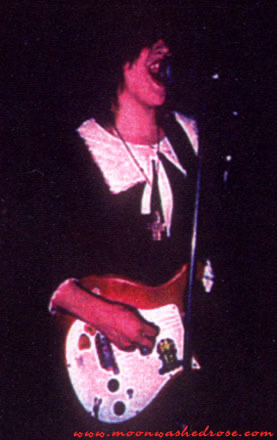
Hole at their first show in 1989. 25 year old red head Courtney and her fireglo Rickenbacker guitar.
199 notes
·
View notes
Text
SCOM Micro Writing Notes:
I know this is from an older chapter, but one of my favorite things about the final showdown between Hunter and Fool’s Gold was getting to write him snarky.

“Put. Luz. Down.” He demanded. His voice was almost scratchy, like feedback on a radio. But it held weight. It was still clear. Strong. Confident . “Let my family and friends go. Give the palismen back their freedom.”
The Guard’s body turned slowly, seemingly un-phased by Hunter’s sudden change.“ Seriously ?” They let out a long light laugh. Luz and Stringbean fell to the ground as the Golden Guard grabbed their belly, dramatically draping themselves over the side of the winged staff. “YOU are not the one who gets to give ME orders, SERVANT CLASS SPECIES.” They sneered.
Hunter moved his Rickenbacker Fireglo into playing position. His fingers hovered over the strings. He paused for a moment to collect his thoughts. His head felt like it was full of firebees, but the space gave a semblance of dramatic effect.
“Well,” he smirked, “You literally just let Luz and Stringbean go, so you kinda are following my orders .”
#toh fanfic#the owl house#sweet child o mine#the owl#owl house fanfiction#fan fic things#hunter noceda#toh the golden guard#the false golden guard#bard! Hunter#bard hunter
8 notes
·
View notes
Text
While Geddy Lee is best known for using basses like his legendary Rickenbacker 4001 in Jetglo and Fender Jazz Bass, another bass guitar of his thats become iconic was his black Rickenbacker 4080/12 Double Neck.
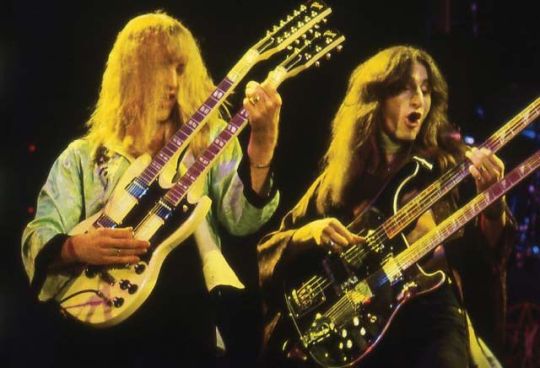

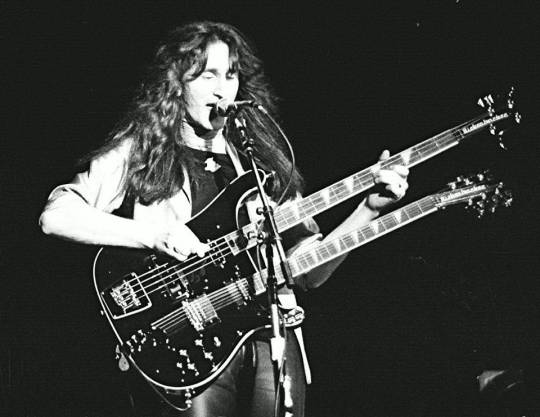
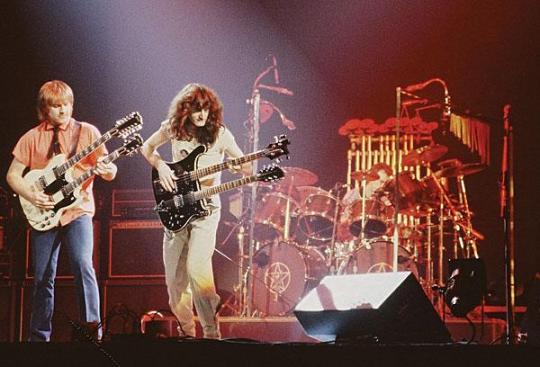


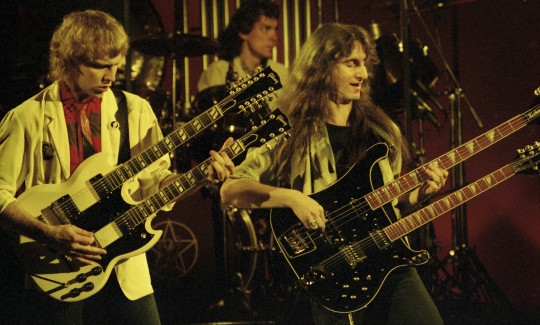

This bass was a standard 4001 4-string bass on the upper neck, with a 480 12 string guitar on the bottom neck.
This bass was most famously used live for the song ‘Xanadu’, where Geddy played his normal bass parts until Alex’s guitar solo near the end of the song he would switch to the 12 string guitar neck and play a rhythm guitar part while simultaneously playing his Moog Taurus bass pedals with his feet.
And actually, the black double neck wasn’t the only one he had. Geddy also used a white Rickenbacker 4080, this one with a 6 string guitar neck instead of a 12 string on the black double neck. This one he used on ‘A Passage To Bangkok’, again playing the normal bass parts then switching to the guitar neck to play a rhythm guitar part along with the bass pedals during Alex’s solo.

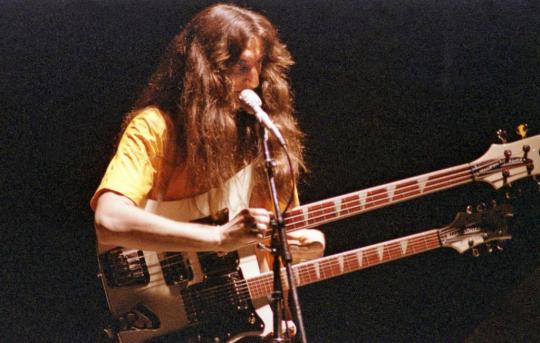
The black 4080/12 was used starting with the A Farewell To Kings tour in 1977 and used until the Moving Pictures tour in 1981, after which it was retired.
The white 4080 was only used for the Hemispheres tour in 1978-79 and the Permanent Waves tour in 1980, after which it was retired.
But thats not the end of the 4080. Geddy brought out a different Fireglo colored 4080/12 along with a Jetglo 4080/12 (unknown if its his original one from the 1970s) for Rush’s final R40 tour in 2015 along with a nearly full version of ‘Xanadu’ as a last hurrah.
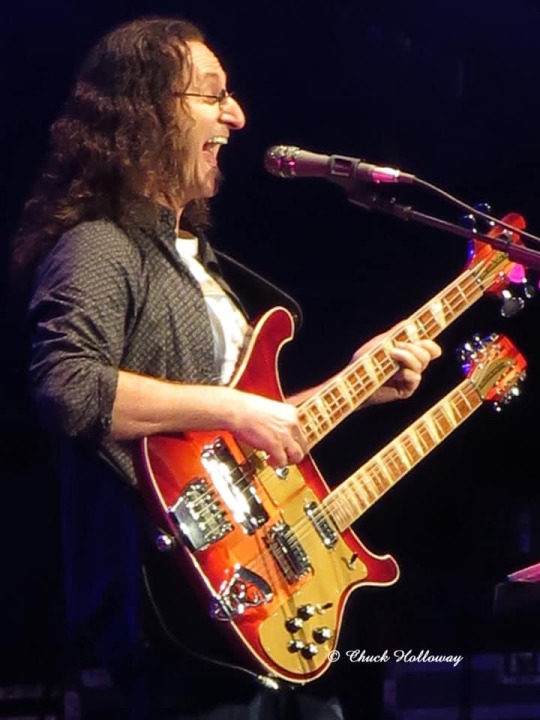

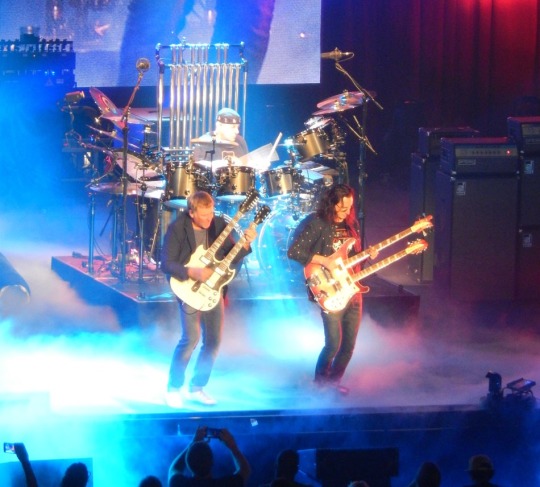


96 notes
·
View notes
Photo
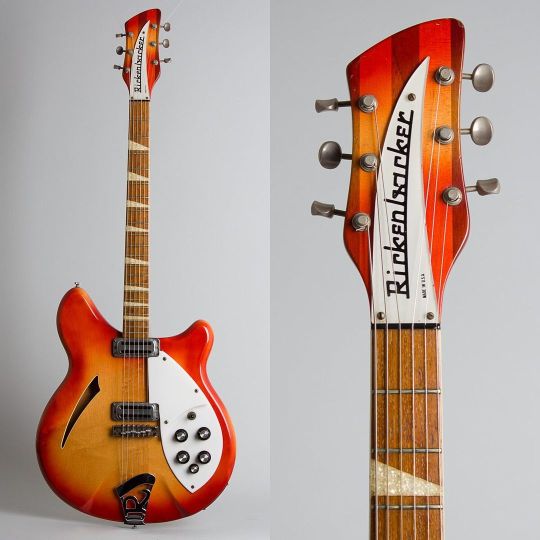
Just arrived a 1966 Rickenbacker Model 360 Semi-Acoustic Electric Guitar in its original silver tolex hard shell case! - Link in our profile. - One of the most instantly recognizable of all classic 1960s guitars, the Rickenbacker "300" series of thin hollow-body guitars has returned to favor again and again as new generations discover its bright, well-defined sound and utterly distinctive look and feel. This is a superb example of a "Fireglo" (red sunburst finish) Model 360 from Rickenbacker's peak year of 1966. This sleek California hot rod was the mainstay of Rickenbacker's line from the late 1950s to the present, and one of the most popular guitars of this period. The round-edge (post-1964) Model 360 is virtually an icon of the 1960s, synonymous with the music and sounds of that era as well as more recent styles. They remain one of the sharpest-looking and most distinctive-sounding of all vintage designs. (at Retrofret Vintage Guitars) https://www.instagram.com/p/Ci5cm2rODMB/?igshid=NGJjMDIxMWI=
26 notes
·
View notes
Text

Rickenbacker 360 12 String C63 Electric Guitar in Fireglo The 360/12C63 from Rickenbacker is an accurate replica of the guitar George Harrison made so famous during the 1960s. Complete with double-bound body, trapeze tailpiece, and unique Rickenbacker 12-string headstock, the 360/12C63 is true to the 1963 version in every aspect, even down to the shading on the Fireglo finish. Created to exact original specifications of the world's most popular 12-string electric guitar
4 notes
·
View notes
Text
Not to be that guy but I'm super glad my rick arrived today - with the scott pilgrim anime coming along I swear they're gonna be filling out fireglo 4003 orders for YEARS. Hell, I ordered mine during a lull and it still took 4 months!
3 notes
·
View notes
Photo


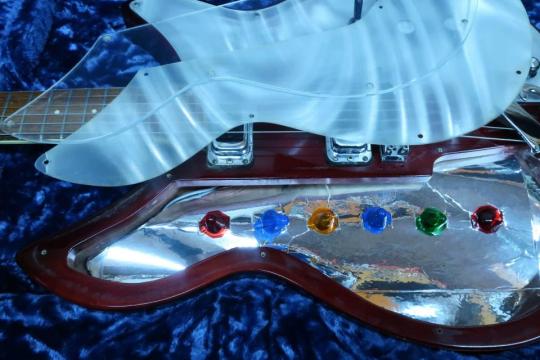


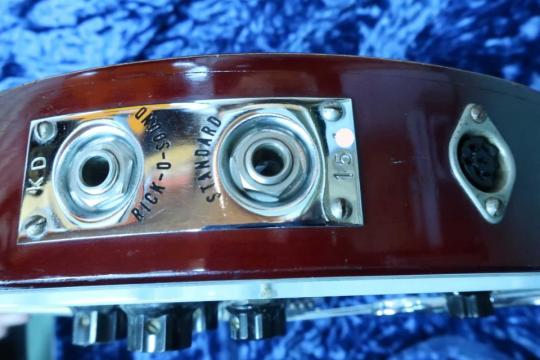
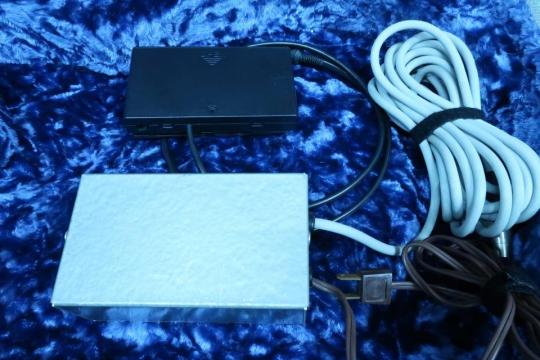



Rickenbacker 331 Light Show / Fireglo / Single Line Light / Maple Semi-Acoustic Body / Original Kluson Peg / Maple Neck / Rosewood Fingerboard / Hi-gain Pickup / 3way Toggle SW and Fifth Control / With Original Case 1971
9 notes
·
View notes
Text
Sunday Sessions: Jeff Buckley’s Guitar Gear
by JEF STONE 18th Apr 2021
Leave a Commenton Sunday Sessions: Jeff Buckley’s Guitar Gear
In this weeks Sunday Session we look at the late Jeff Buckley's guitar gear.
Jeff Buckley’s Grace album is a tour de force in songwriting and it also features some exceptional guitar playing and recorded guitar tones. In this weeks Sunday Sessions I’m going to go through that gear, and talk about how to grab some of those tones and integrate them into your own rig.
Jeff Buckley
Jeff Buckley’s album Grace is often seen as the perfect debut album by many.
In the early 1990s boutique amplifiers and effects just weren’t a thing. Yet Jeff’s whole album is full of sweet guitar tones and to this day it inspires many guitarists to go seek out those guitar tones.
It features beautiful melodies, amazing song writing and moments of complete abandon on the guitar. What stands out the most for me personally, is the depth of guitar tones on the recordings. With just a small amount of equipment, and none of it particularly fancy, Jeff Buckley created something which still resonates with listeners to this day.
Jeffs Guitars
Most players will be familiar with the 1983 ‘Top Loader’ Fender Telecaster that Jeff wielded as his main guitar, along with a 1976 Gibson Les Paul Custom in the classic black finish, which he was also seen using frequently.
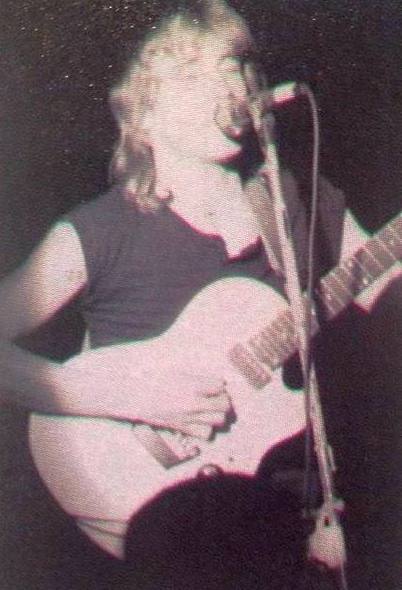
The Norlin Custom
I suspect that once he had the money, he went out and purchased the Norlin era Gibson ’76 Les Paul Custom. We know its neck was completely broken off at one point, as it was repaired in around July 1995 in Amsterdam. This guitar was featured in an exhibition at the Rock & Roll Hall Of Fame And Museum, in Ohio for two years, along with many of his possessions, handwritten lyrics, poems and some clothing.
As far as I am aware the this Les Paul Custom was completely stock with no modifications. These are great guitars and when you find a good one, they are worth holding on to.
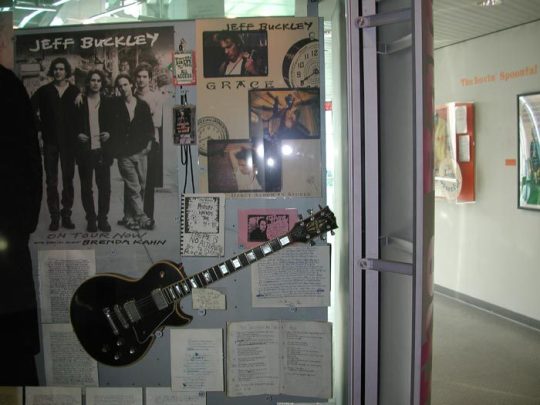
Jeff’s Telecaster

The borrowed guitar
What is interesting is that this Telecaster was actually borrowed from Janine Nicholls, a director at a local arts institution in New York while Buckley was still playing cafe shows in 1991. This guitar is a Butterscotch 1952 style Telecaster and apart from the bridge which is a top loader and had six individual saddles, rather than three brass barrels, and that hot stacked bridge pickup its a pretty standard Telecaster to look at, just with a chrome mirrored pickguard.
The guitar was returned to its original owner, after Buckley’s tragic death in 1997 and they eventually sold it on auction in 2011, selling for over $50,000.
As we now know Muse frontman Matt Bellamy purchased the guitar in 2020 and he is now the proud owner of this instrument.
Rickenbacker 12-String
On occasion you would also see him with a Rickenbacker 360/12 “Fireglo”. Buckley bought this 12 string Rickenbacker 360 with the money from his first advance after getting signed with Sony. This 12-string was mainly kept in Open G tuning, and live he would use it on the songs ‘Last Goodbye’ and ‘Vancouver’.

The Flower Guitar
Acoustics
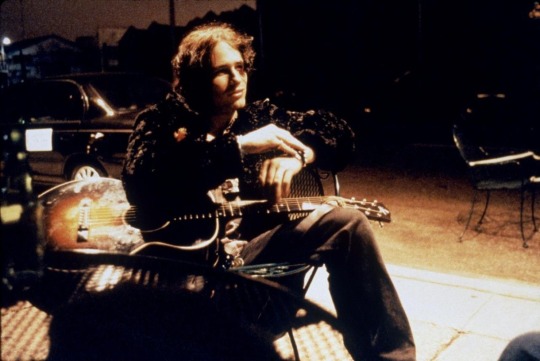
The Guild F-50 was his main acoustic throughout the recording and touring of Grace, and you’d often the guitar covered in duct tape to help quash feedback issues when he played it live. It’s a guitar that is similar to the twelve string model his estranged father Tim Buckley had used.
Whereas the smaller, warmer sounding Gibson L-1 which Buckley got sometime around 1994, and often used for his finger style playing. Buckley used this guitar on many of his demos and at his smaller shows.
Amplifiers
Amp wise his usual setup was a ’90s Fender Vibroverb ’63 Reissue, and live you would also see him using a Mesa Boogie Dual Rectifier Trem-o-verb Combo.

Twin Amps
And in the mid-nineties the Mesa Boogie Dual Rectifier Trem-o-verb Combo was seen as the top end of amplifiers by many and so I can see why he used one. In the studio and live he often used these two amps together, with the Fender providing the cleans and the Mesa Boogie handling all his gain tones.
Effects

Guitar Tunings and chords
Jeff is known to have used Dean Markley Blue Steel strings on his electrics, and I’d assume he played 10s. He used Open G on Last Goodbye, which is D-G-D-G-B-D and Hallelujah is achieved by using a capo at the 5th Fret which gives you A-D-G-C-E-A.
He also uses a lot of 6th chords, where you use a standard triad (the 1st, 3rd and 5th) with the 6th added. With both major 6th and minor 6th chords featuring frequently in his repertoire.
These 6th chords have a lot more drama in them and so that major 6th has a nice pleasant welcoming warm sound, whereas the minor 6th has a much darker and more haunting sound.
For example Dream Brother uses Bb6 – Cm6 – Dm7 – Ebmaj7 and the song Grace uses Em – F#m6 – G6 – A6.
I’d suggest brushing up on your 6th chords will really help you to cop some of that tension and drama that Jeff always coaxes out of his songs.
Grace Tones
My advice would be when attempting to get some of the tones that Jeff achieved on Grace, don’t be afraid of reverb and letting it create space in your tracks.
Look for a good warm, Fender-style clean tone, and if you are using a modeller or software, look for something which has a Fender Vibroverb or similar, to achieve this. Fender has reissued these amplifier a few times, so you can find them, and I know of a few boutique amp builders that will make you one.
His driven tones are definitely that Mesa Boogie sound and again you can find these within software and modelling. Originals are loud, very loud, so if you re going to hunt one down be prepared for the volume.
The videos below discuss some of his recorded tones and how to achieve the ‘reverb’ sound, which he is famous for. You can certainly still pick up the Alesis Quadraverb models used, but there are also plenty of plugins which emulate them. Something along the lines of the Valhalla Vintage Verb will get you in the ballpark.
I hope this article helps you on your quest for great guitar tones, and if you have the time, pop Grace on your stereo and go immerse yourself the wonderful layers of guitar tones.
#Jeff Buckley#Sunday Sessions: Jeff Buckley’s Guitar Gear#jef stone#jeff buckley guitar gear#guitar gear#gear
12 notes
·
View notes
Text
Here's one you don't see every day!
1959 #Rickenbacker #365 #Capri #fireglo, spotted at @capsulemusic Toronto.
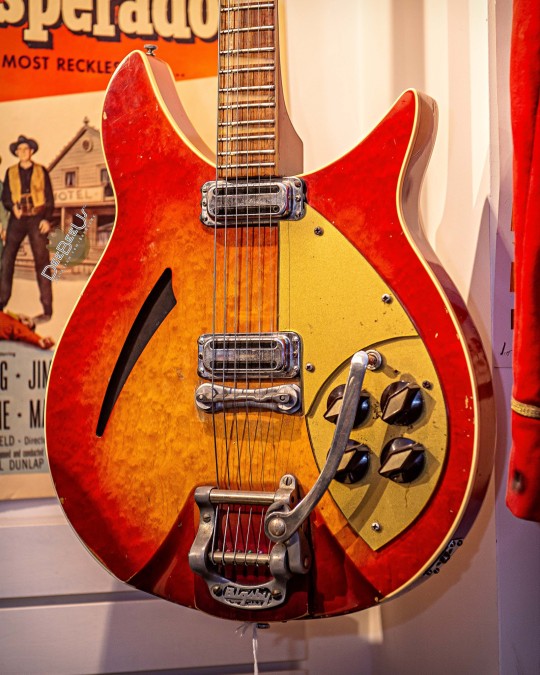
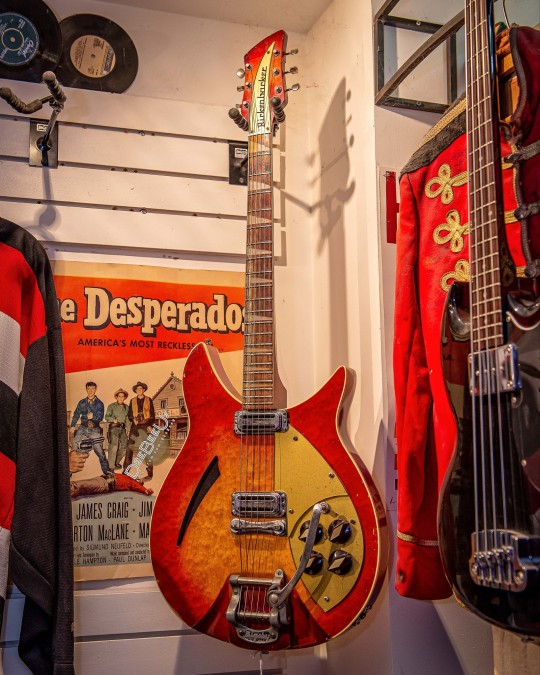
12 notes
·
View notes
Text

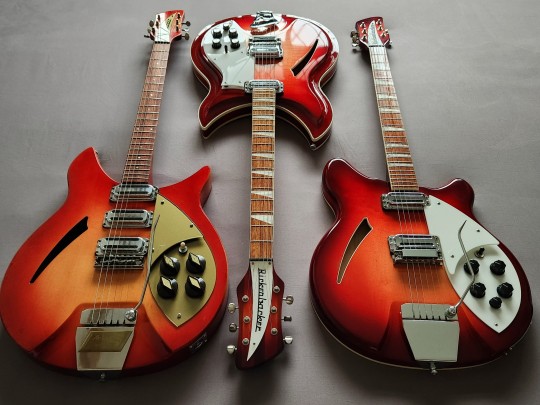
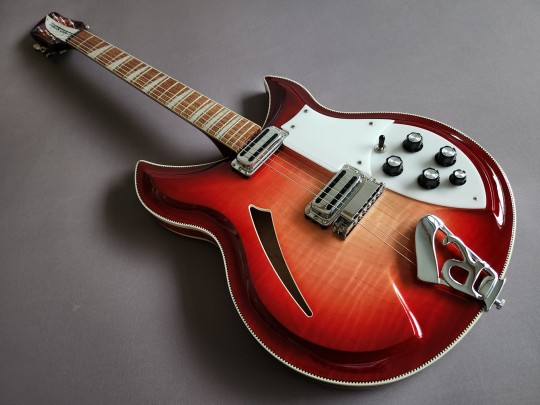
House on fire...... which one should I grab? 🤔
#guitar#photography#collection#gas#love#guitars#rickenbacker#ric#guitar collection#guitarcollector#ricfreak#fireglo#capri#381V69#365
62 notes
·
View notes
Text
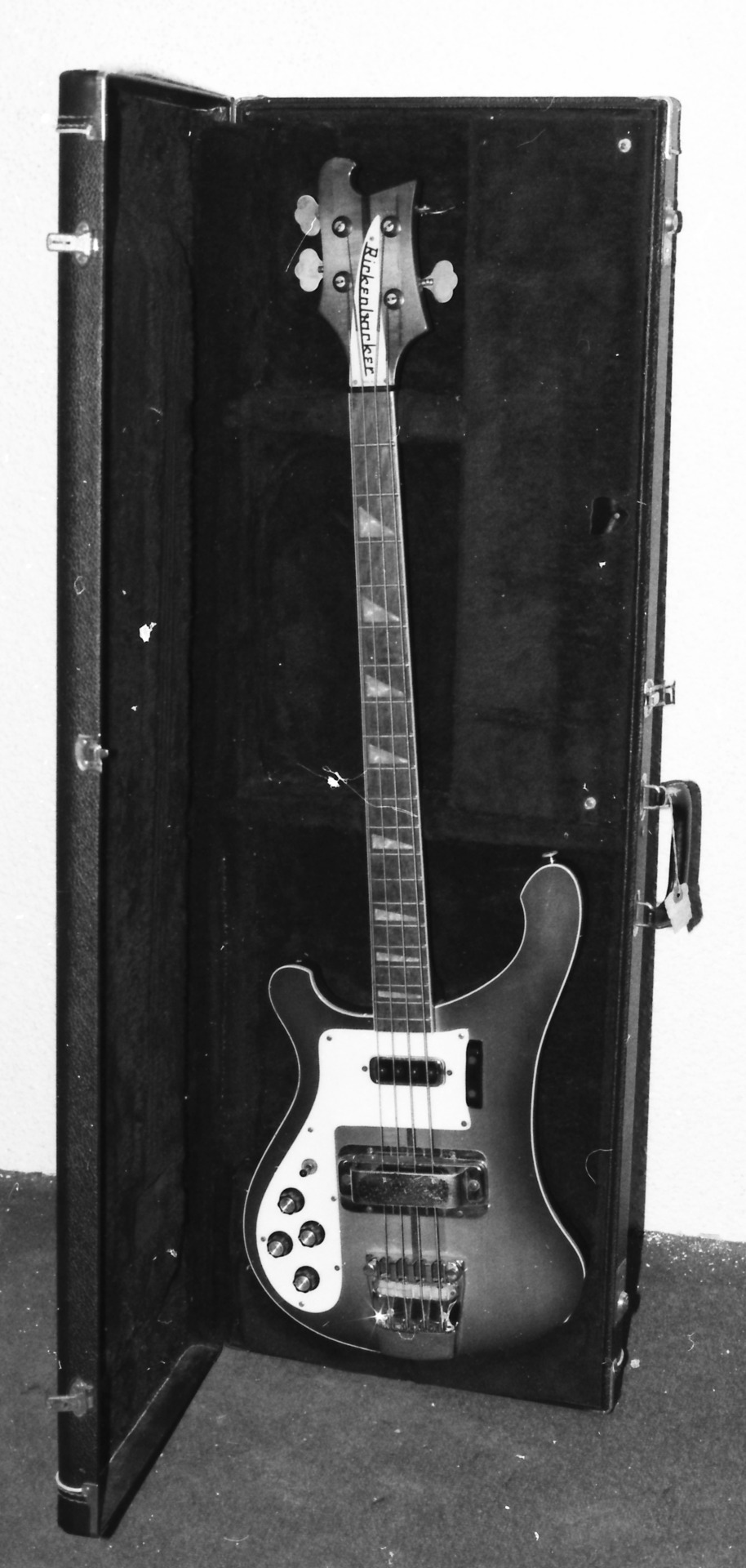
Rickenbacker 4001 (Fireglo)
1 note
·
View note
Text

オススメ商品情報!
Rickenbacker
4003S Fireglo
●販売価格、詳細はデジマートをご覧ください!!
https://www.digimart.net/cat03/shop5214/DS08507767/
0 notes
Text
As the Byrds declared in 1967, if you want to be a rock 'n' roll star, "Just get an electric guitar, then take some time and learn how to play."
For many aspiring artists in the '60s, the electric guitar of choice was a Rickenbacker, which the Beatles popularized with their appearance on The Ed Sullivan Show. John Lennon had a Rickenbacker slung across his body in 1964; George Harrison frequently used one on tour, too, effectively cementing the Rickenbacker as the guitar for aspiring rockers. Since then, few instruments have held such an iconic foothold in the history of rock music as the Rickenbacker guitar. It's instantly recognizable to seasoned musicians and casual fans, thanks to its distinct shape and burning Fireglo finish.
The Rickenbacker had a fascinating history before the Beatles, as chronicled in the recently released book Rickenbacker Guitars: Out of the Frying Pan Into the Fireglo by Martin and Paul Kelly. (The pair also authored 2010's Fender: The Golden Age 1946-1970.) The evolution of the instrument, from initial design blueprints to its place on the international rock 'n' roll stage, is chronicled inside the book.
"Electronic music and popular culture evolved simultaneously and that’s something that has always fascinated me — how technology enabled musicians and how the musicians helped to drive that technology forward," Martin Kelly tells UCR. "It changed our world. Cramming 90 years of history into a 330-page book was certainly a challenge, but I’m pleased with how it turned out."
Out of the Frying Pan Into the Fireglo also includes sections devoted to artists who brought the sight and sound of Rickenbackers to the wider public, like Lennon and Harrison, but also Tom Petty, Paul Weller, Susanna Hoffs, Johnny Marr, Geddy Lee, Peter Buck and probably the instrument's biggest fan, Roger McGuinn. The Byrds co-founder first saw Rickenbackers used by the Beatles in A Hard Day's Night. He'd seen the movie with his bandmates, all of whom became enamored with the idea of becoming bona fide rock 'n' roll musicians.
“When we came out of the theater, David Crosby was swinging around a light pole like Gene Kelly in Singin’ in the Rain saying, ‘This is what I wanna do, this is great!’" McGuinn recalls in the book. At the time, Gibson and Fender were the most popular brands available; Rickenbacker was still fairly obscure, but Harrison's 12-string, in particular, caught McGuinn's attention. "George used it in a really cool way - he played melody lines up and down the G string. I thought that was really effective, a great sound."
Watch the Beatles Perform 'A Hard Day's Night' 
McGuinn traded a couple of other guitars for his first Rickenbacker and he was smitten from the get-go. "Tim Dixon, our first manager asked me to describe the sound of it," McGuinn tells UCR. "And I said it's like a uranium isotope in a ball of butterscotch."
With McGuinn's help, the guitar went from a fairly obscure American brand to a coveted instrument worldwide. McGuinn frequently used his 12-string Rickenbacker on Byrds songs, lending an air of light, airy charm to classics like "Mr. Tambourine Man," "Eight Miles High" and "Turn! Turn! Turn!" Within a few years, it would be difficult to detach the sound of Laurel Canyon folk rock from the jangle of a 12-string Rickenbacker.
The Beatles' influence would come full circle in 1965. Harrison's Rubber Soul track "If I Needed Someone" was, as McGuinn was made aware by Beatles publicist Derek Taylor, directly inspired by the Byrds' "The Bells of Rhymney."
"We all lived in Laurel Canyon and [Taylor] came over to my house with this reel-to-reel tape .
.. a little three-inch reel of tape," McGuinn remembers. "And he said 'George wants you to know that he wrote this song based on your lick in 'Bells of Rhymney.'' ... I couldn't believe it. It was such an honor."
Listen to the Byrds' 'The Bells of Rhymney'
Years later, the pair would spend time together at Harrison's Friar Park estate, where Harrison brought out the same Rickenbacker he used on A Hard Day's Night.
In a lot of ways, Kelly says, the visibility of the Rickenbacker – on TV or famous album covers, like Petty's Damn the Torpedoes — is a huge reason the instrument has stuck around. "Player association has been a huge part of Rickenbacker's success and longevity. When it comes to rock ’n’ roll and pop culture, image is everything," he says, noting that after the Beatles' appearance on The Ed Sullivan Show, Rickenbacker CEO F.C. Hall was savvy enough to travel to New York to meet the band and supply them with more instruments.
"[McGuinn] was the first American player to really put Rickenbacker on the map, and his endorsement lead to Mike Campbell and Tom Petty choosing Ricks," Kelly says. "The baton still gets passed on from the likes of Radiohead to younger players like Laura Jane Grace from Against Me!"
source
0 notes
Photo

Very early 1961 Rickenbacker 345 Capri has landed. The features on this one exist for such a short window and sparingly few were made with the deep Capri body, mono input, and patent pending Ac’cent vibrato. All that jangly Rickenbacker fun with the serious heft that you only get with the deep-bodied Capris. #rickenbacker #vintageguitar #Fireglo #vintagerickenbacker (at Mike & Mike's Guitar Bar) https://www.instagram.com/p/CJ4lzTrgAE6/?igshid=ra8qwoema1o9
53 notes
·
View notes
Photo
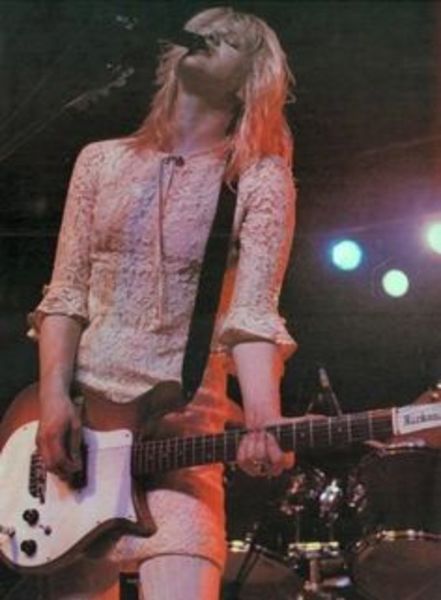



95 notes
·
View notes